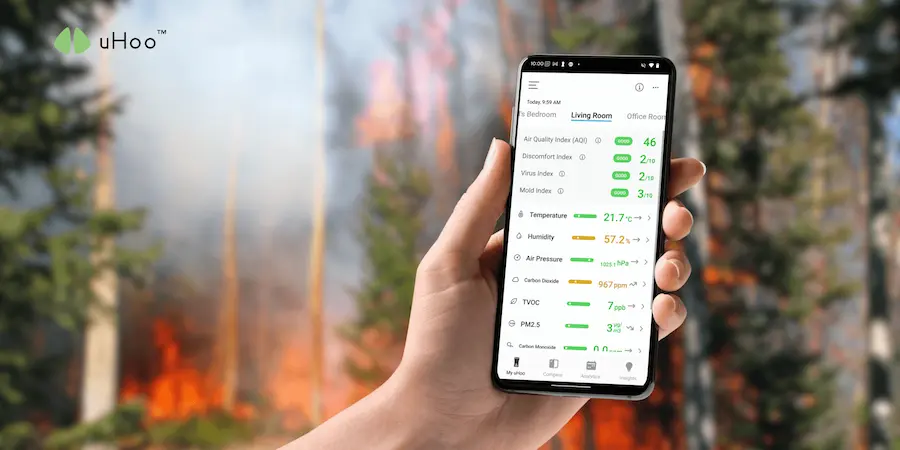When there’s wildfire smoke, the air outside can quickly become unhealthy. While staying indoors offers some protection, harmful smoke particles are incredibly tiny and can still infiltrate your home. This is where the role of indoor air monitoring becomes absolutely essential. You can’t fight what you can’t see, and an indoor air quality monitor provides the crucial visibility you need to truly breathe easy.
Here’s why the role of indoor air monitoring is vital during wildfires:
- Real-Time PM2.5 Detection: Wildfire smoke’s greatest danger lies in its fine particulate matter (PM2.5). These microscopic particles are invisible to the naked eye but can deeply penetrate your lungs. Without an indoor air monitor, you’re guessing if they’ve entered your home. A monitor like uHoo provides real-time PM2.5 readings, showing you exactly how much smoke is in your indoor air. This data is the most direct indicator of your exposure.
- Verifying Your Protective Measures: You close windows, run your AC on recirculate, and turn on an air purifier. But are these actions truly effective? The role of indoor air monitoring is to confirm. If your monitor shows a drop in PM2.5 after you’ve sealed your home or activated your purifier, you know your efforts are working. If levels remain high or rise, it signals that smoke is still getting in, prompting you to identify and seal more leaks or adjust your filtration strategy.
- Detecting Hidden Infiltration: Smoke can seep through tiny cracks in walls, around outlets, or through poorly sealed vents that you might not notice. An indoor air monitor acts as your silent sentinel, detecting these invisible invasions of smoke particles and alerting you to areas that need attention.
- Informing Ventilation Decisions: While keeping windows closed is vital during peak smoke, homes need some ventilation to prevent CO2 and VOC buildup. The role of indoor air monitoring helps you choose the safest times for brief “air purges.” By checking outdoor AQI (via your monitor’s app integration) and then monitoring indoor levels, you can open windows for a short burst when outdoor smoke is lowest, seeing the immediate impact on your indoor air quality.
- Understanding Comprehensive Air Quality: Wildfire smoke isn’t just PM2.5. It also contains Volatile Organic Compounds (VOCs) that cause the smoky smell and can be harmful. Sealing your home also traps exhaled CO2. An advanced indoor air monitor tracks these too. By understanding the full picture, you can address all aspects of your indoor air quality during a smoke event, ensuring overall healthier air.
- Empowering Proactive Health Decisions: For vulnerable populations (children, elderly, those with respiratory conditions), understanding indoor air quality is paramount. The role of indoor air monitoring empowers these individuals and their caregivers to make informed decisions about staying in, adjusting activities, or even temporarily relocating if indoor levels remain unsafe.
In an era of increasing wildfire smoke events, the role of indoor air monitoring moves beyond a luxury to an essential tool. It provides the actionable data you need to protect your lungs, maintain a truly safe haven in your home, and genuinely breathe easy when the air outside is compromised.

